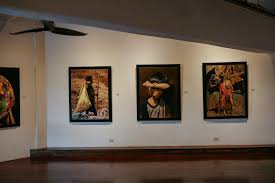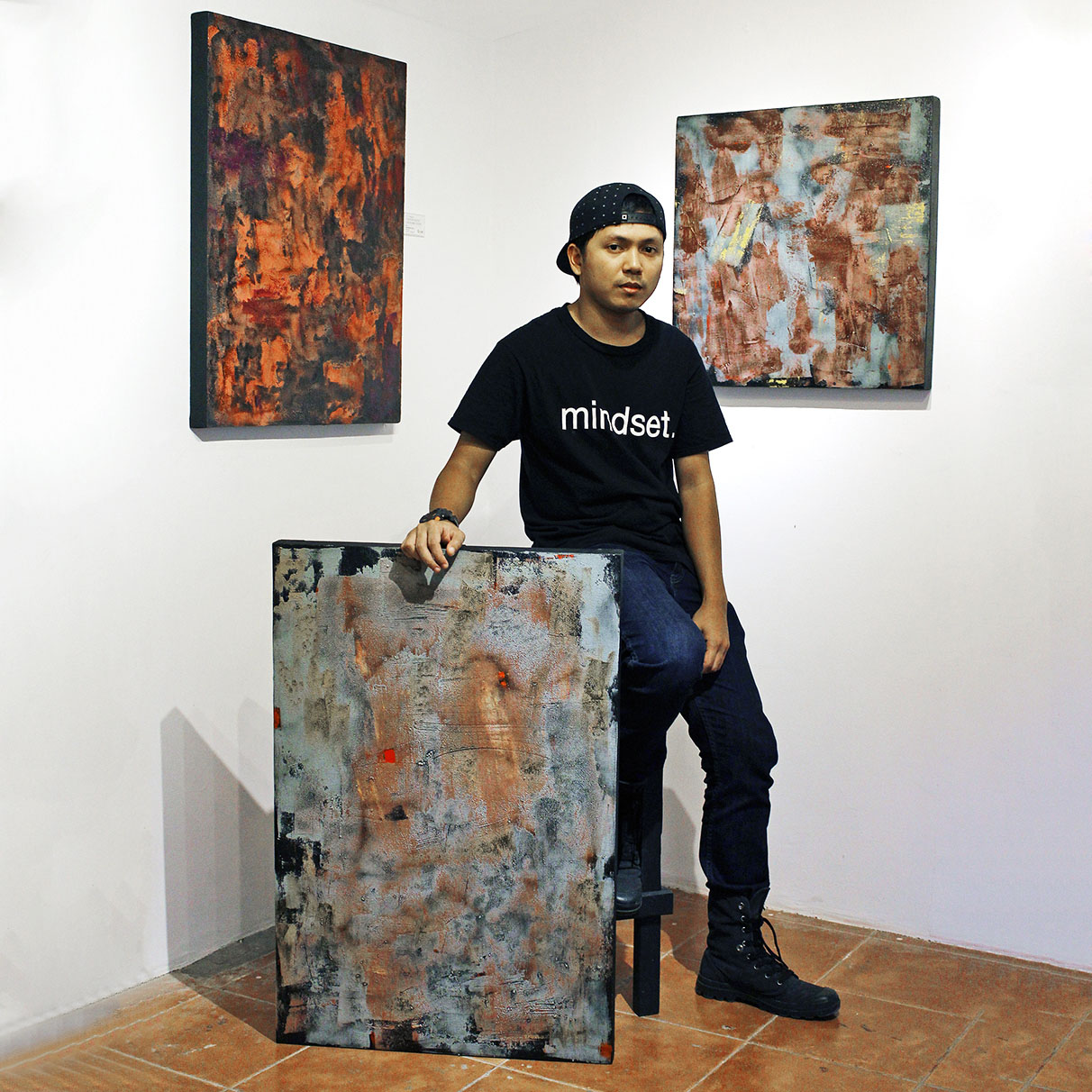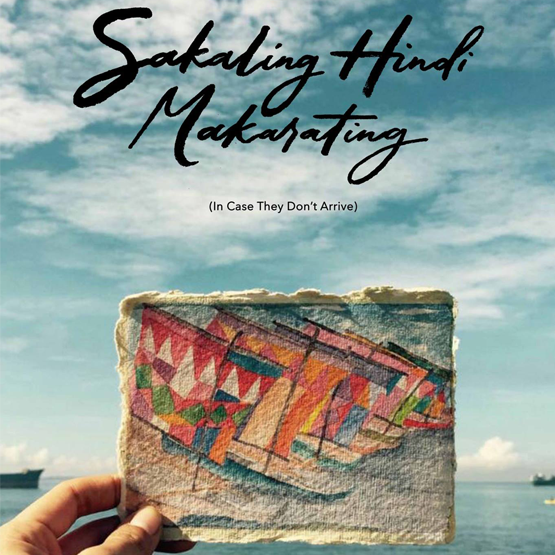People
The Four Cebuano Artists to Look Out For
Taking a stand against censorship, young Cebuano digital artists bare all on the streets of Cebu true to their carnal nature.
Taking a stand against censorship, young Cebuano digital artists bare all on the streets of Cebu true to their carnal nature.
By Jeff Cruz
Danielle Sea

Danielle Sy was kinetic when she entered Sprockets Café near University of San Carlos-Technological Campus straight from her class. Rapport was not an issue—her joyously unrestrained smiles assured us that everything was going to go smooth. We told her we didn’t prepare interview questions; we wanted the short meet-up to be candid and interviews get more engrossing when questions are answered instantly without conscious thought. Admittedly, the interview started slightly clumsy. “I am talkative,” she said cheerfully, dismissing the whiff of awkwardness—the rest of the time interviewing Sea (a name her friends fondly call her) was like talking to a long-lost friend.
You’re taking up Advertising Arts at USC. Is this what you really wanted to finish since you were a kid?
Actually I realized I really don’t like advertising. I just enjoy the company of people around me and what we’re doing. I don’t think I will be in an advertising after college. But I love illustrating! I am not really that good in my class but I achieve in my own terms.
What did you learn that you could illustrate?
When I was a little girl I used to draw stick houses with gardens. Back then I had an older cousin who was taking up interior design, and she saw my drawing and said it was good. Then I started to doodle on newspaper, and now I’m the only person in the family pursuing arts. They all stopped.
What was your first break and how did you feel about it?
I first joined an exhibit with Street Konect through The Little Secrets: Venus held in ALPS Café in Guadalupe. It was an all-girl exhibit that showcases a diverse set of artwork, and it was really kind of an achievement for me. The second one was The Box of Little Secrets: X held at Chillage last February—we displayed 40 postcard-sized pieces of erotic art.
Have you tried illustration for companies or films?
I have projects now. I was one of the artists who were commissioned to paint a mural at Lantaw Floating Restaurant in SRP. I think it was awesome because it was really big. I was also commissioned to work on a Converse mural.
Was it hard finding your own voice and making your work distinguished from others?
More artists are already using digital, but I stayed with watercolor and paper. I want to feel the paper. I tried digital, but it doesn’t feel the same. I’m also an artist who needs to control my emotions—I’ve learned that when I am too emotional while painting, I tend to ruin the paper. My classmates tell me that I look like my work—when they see an illustration, the know that it’s mine.
Kathyrn Layno

Kathryn Layno was aware that she has a gift for the visual arts. Like other artists, he has explored her capabilities well enough, having wielded enough pencils to create stunning outputs since she was a little girl. She has refined herself as an artist, though she admits she didn’t get into it seriously until her late teens. It was then that she realized the old saying was true, that “when you’re good at something, do not do it for free”—it was about time she made the arts her bread and butter. Kat tells us she wanted to commit her hands to animation and work for Disney but she also bore a strong love for comics, so when an opportunity to do both came knocking, she grabbed it by the neck.
What was your big break?
The first time I got involved drawing superheroes was on Upperdeck’s “Marvel Masterpieces” sketch cards. An artist friend of mind on Deviantart announced she was on the set, and I inquired about how to apply. That’s pretty much how I got into sketch cards. I also applied at the Marvel talent-scouting event when Marvel editor C.B. Cebulski was in Manila, and was one of two artists from Cebu to get an interview, the other being my good friend Miko Puns. As far as coloring for DC, I collaborated with Drew Johnson on other independent projects, and when he got a gig with DC on Masters of the Universe, he brought me on as a colorist. I’ve been very lucky with my chances.
How do you describe your creative process?
I tend to make moodboards before I start things. I collect pictures and put a montage of them together that coincide with the themes I’m trying to portray, sometimes have a movie with the same characteristics playing. Sometimes I’ll have audiobooks or documentaries playing in the background. Once I’m immersed, I start with very quick rough sketches, trying to nail the composition down. Lines, colors, values and everything else follow after that fairly smoothly.
People who go into the arts in the Philippines are often discouraged. Were you worried while taking up Fine Arts?
It’s sad that it is that way. Most people I know that make a living from illustration do so by working for clients overseas since they pay higher. But I am incredibly stubborn and resilient. If something scares me, I don’t like losing to that fear—it makes me want to prove others and myself wrong. I’m glad it worked out well for me.
Have you collaborated with Pinoy artists?
I joined a comic anthology group called Sukol Mo when I was 14. That was probably the first time I collaborated with other Filipino artists, and I learned a lot. Since then, I’ve done a few with my friends for comics and exhibitions.
What is your dream project?
My husband and I would love to work on an indie game eventually. We know the right people for the team, but finding the time is a problem.
The Hermit is Out

Although a bubbly extrovert who feels right at home in the middle of a party, the personality behind The Hermit is Out feels that his name is perfect for his artist alter ego—“it’s a side of me that people don’t usually see.” As something he does on the side, his art is a collection of digital erotic drawings splashed in color. So are these scenes rooted in reality? “Maybe it’s more of a fantasy,” he laughs.
How did you start out with your art?
Doodling in pages of my notebook back when I was in high school.
What is your creative process like?
I don’t necessarily have a creative process when it comes to my drawings. Whenever I’m bored at home, I just play around with my drawing tablet. Whenever I’m traveling, I tinker with Adobe Idea apps on my iPad. I guess watching the occasional porn helps.
Do you remember the first piece that you did?
Nope. My earlier work was tamer.
Do you think the Cebu art society is ready for pieces like this?
I’m not really sure. Some of my friends ask me if I’m trying to convey any message with my drawings. I don’t. I just draw what I feel like drawing—there’s no agenda behind it.
Do you have any plans of doing an exhibit in the future?
If time permits. Right now, I’m quite busy putting up my own dessert shop. But I’m slowly working on my portfolio site where I plan on putting my most recent work.
Jan Sunday

For Jan Sunday, art is a diary—instead of writing, she draws how she feels and sees herself. She agrees that not everyone will find her work sublime; in fact, she knows that some might find it offensive and uncomfortable. Her work does not always portray what the eyes want to see, instead harboring things that conventional artists might dare not portray. Most of her pieces are inclined to women and sexuality, but this does not necessarily mean our eyes should shy away from the visual display. Jan’s artwork grabs our attention—it demands to be beheld.
When did you discover that you were capable of all this visual art?
So cliché—ever since I was a kid, I’ve always loved drawing. I’m an only child and it’s kept me company for years.
Can you describe your creative process?
It just happens. I don’t really plan it. My best work is when I’m most depressed—it’s like therapy.
How would you describe your work?
Low-brow, provocative self-portraits. Feminist-oriented. Sometimes I feel a bit out of place at shows, but I’ve always known that “different” is not bad.
Where do you get your inspiration?
I’m driven by life’s tragedies and the looking mirror. I don’t think anyone else has inspired me to create what I’ve created. It’s all me, it’s all organic. I don’t even know if I’ve followed someone else’s illustration style. I’m fond of black and white nude and vintage photography, and surreal films. I don’t really keep track of names but I have them bookmarked on my computer and written on my journal.
When was your first big break?
It all started with !HA?, not a PunkShow (Manila) and Little Secrets popup art shows. Those aren’t really “big breaks” but it got my name out there. This feature’s probably it. I’m just glad and thankful some people are interested in my work.
What is the most meaningful project you did?
My band’s album cover illustration — Tiger Pussy-People You Hate album. Dark, deranged and girly.
What is your dream project?
Just to be able to put out more work and maybe paint on a larger medium—that’s enough for me. Like I said, it’s all personal. I don’t do this for the world.
People
A Destination Wedding in Capiz; A Love Story in Focus
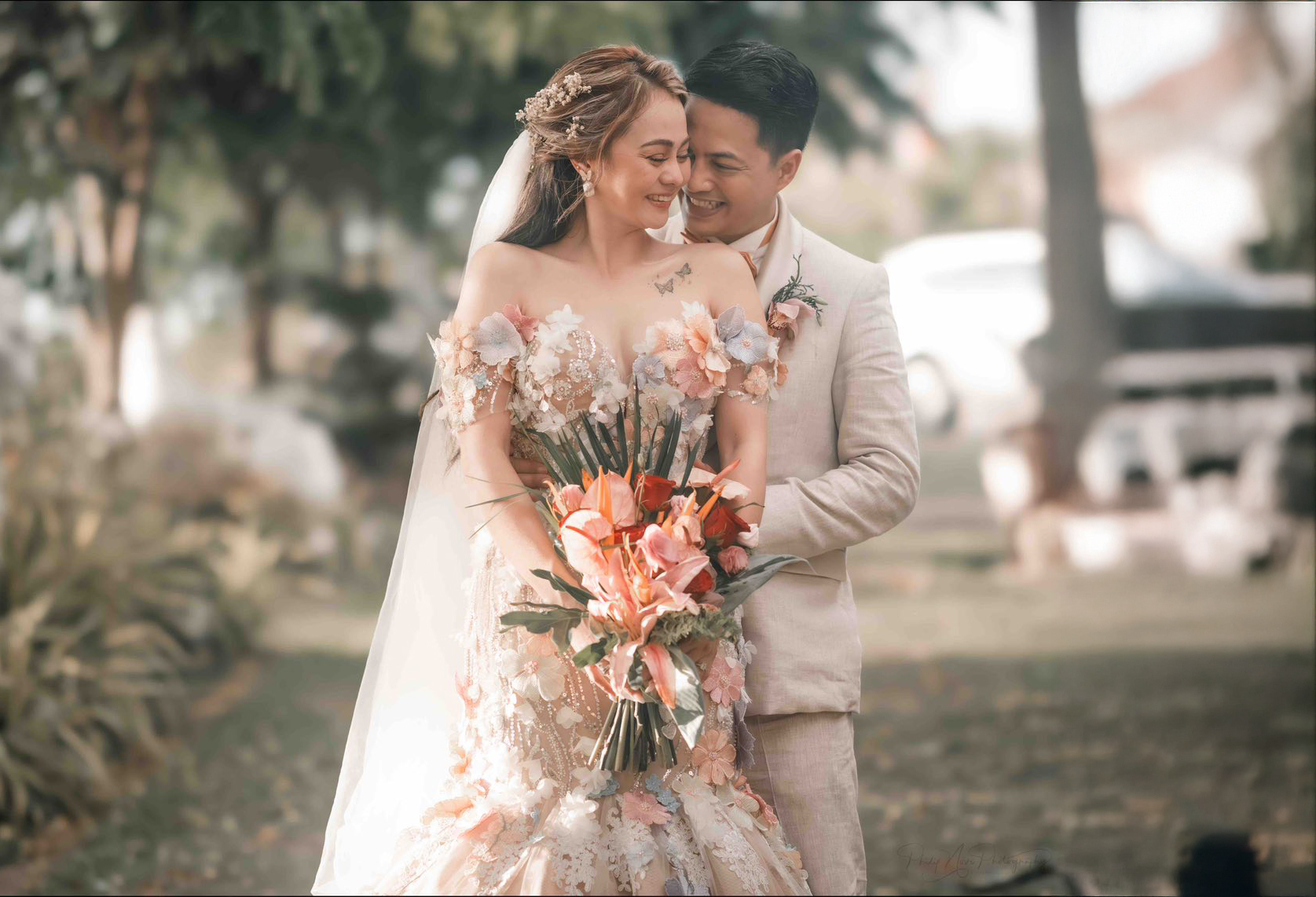
by Oj Hofer | photography by Pat Dy | styling by Romero Vergara | bridal gown & groom’s tuxedo by Oj Hofer
As June draws to a close—a month filled with vows, veils, and wedding bliss—it’s only fitting to end with a love story that began not in a chapel, but behind the lens of a camera. Meet the groom, Phillip Novo: a seasoned maritime officer commanding international vessels by profession, and a passionate hobbyist photographer in his downtime. Mr. Novo has captured countless scenes from around the world, but nothing compares to his candid portraiture study of the woman he would soon marry—Mitch Alianza—in a heartfelt ceremony at the Sacred Heart of Jesus in Roxas City, Capiz.
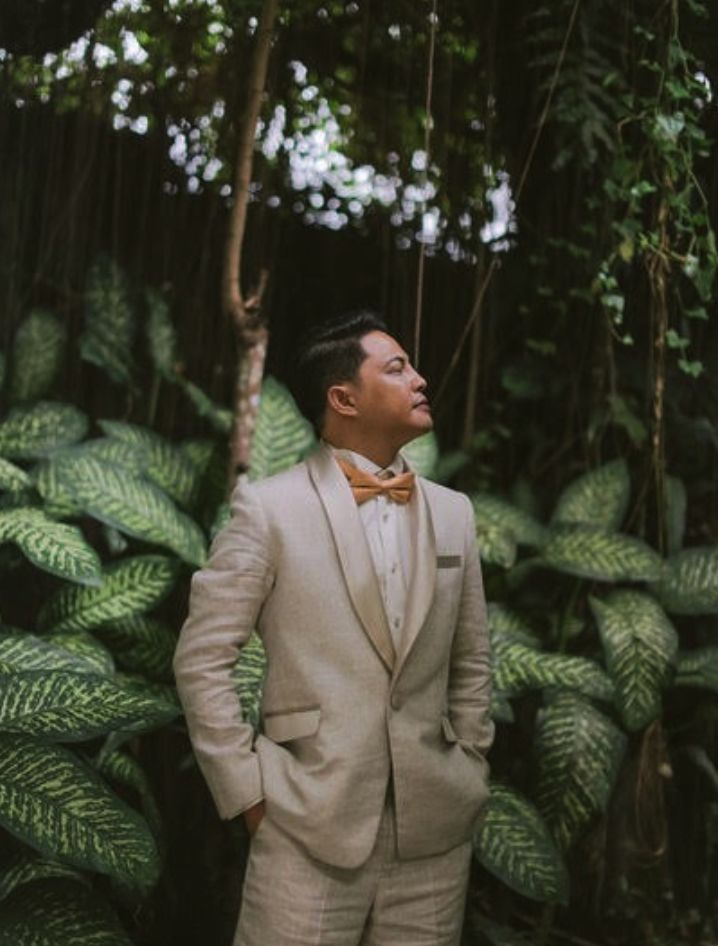
Philip keeps it classic in sun-washed Seychelles beige linen.
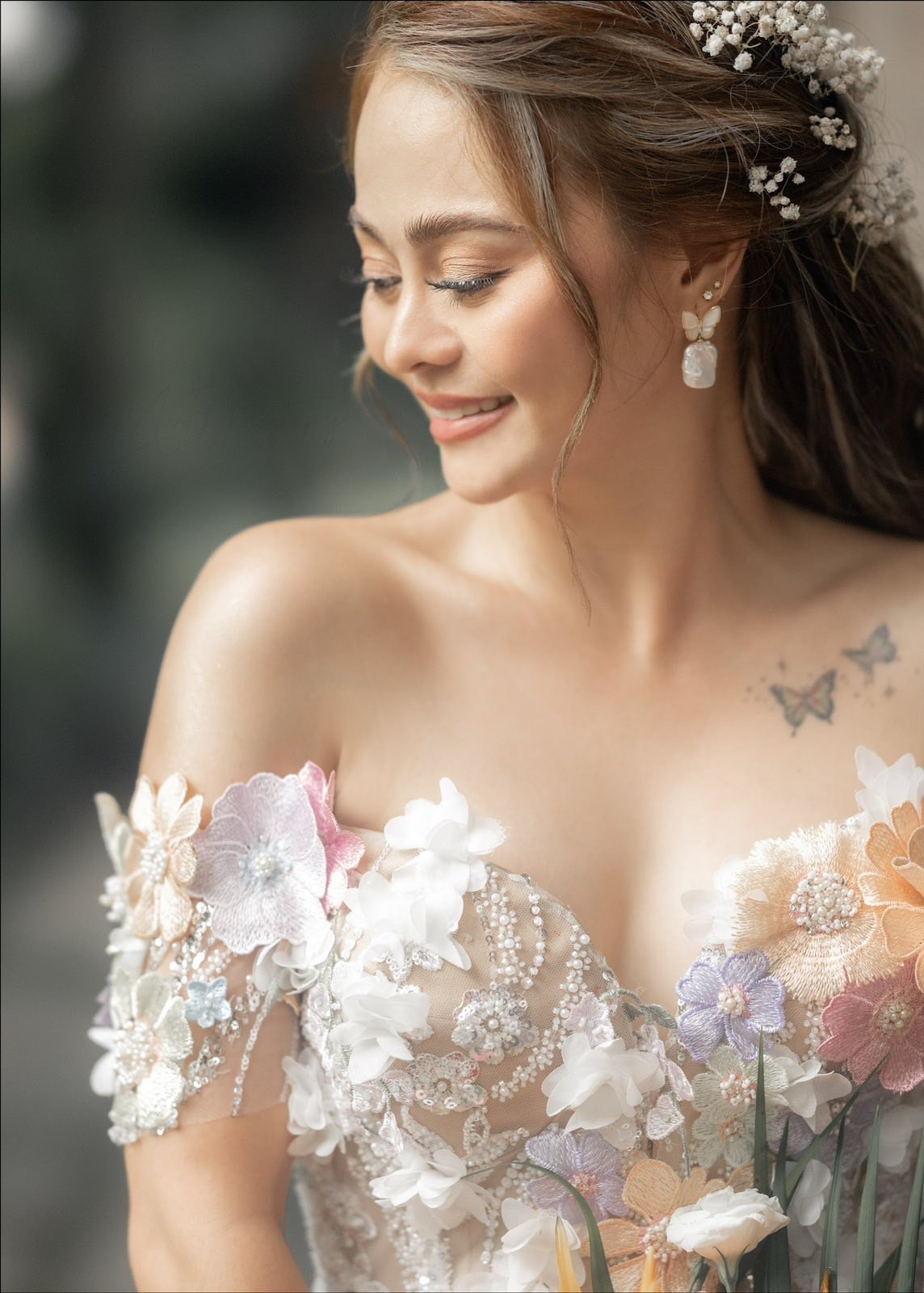
Mitch channels Persephone in a gown that blossoms with spring’s charm
Capiz became the couple’s destination of choice as an homage to the bride, who hails from the province. Historically, Capiz was the second Spanish settlement established in the Philippines. With its 80-kilometer coastline and a mesmerizing stretch of rivers and swamplands, the province offered a natural allure to the wedding party. Yet for the groom, it was more than scenery—it was about honoring his bride’s heritage and heart.
Their love story spans continents, email inboxes, and a few overpacked pieces of luggage. Phillip recalls their serendipitous encounter involving jumpsuits, hot air balloons, and the rhythm of a life lived in sync.

The Sacred Heart Shrine in Capiz, transformed into a lush tropical dreamscape.
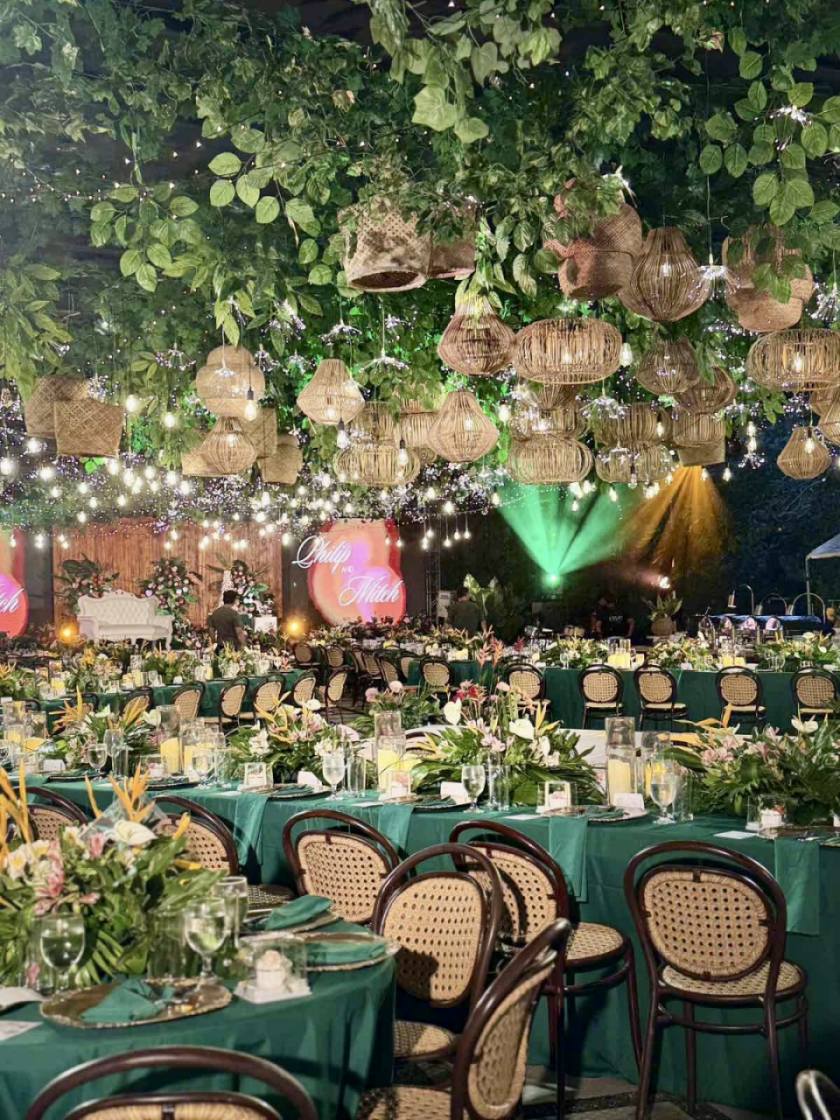
Wicker baskets, solihiya chairs, and cascading greens brought understated elegance to the naturalistic reception at Istorya Forest Garden.
How did you meet Mitch?
Right after covering a friend’s wedding. I spotted her navigating the space with this quiet confidence. We didn’t even speak—just exchanged a look. Later came a few messages, a first date, and her walking toward me in a black jumpsuit. That moment? Unforgettable. I thought, “Ka-Vogue!”
When did you know she was the one?
Honestly, from the start. I had just closed a big chapter of my life—career goals, family responsibilities—and when I held her hand for the first time, I didn’t want to let go. Everything just aligned.
You proposed in Turkey—why there?
Cappadocia. Picture it: fairy chimneys, floating hot air balloons, and this surreal landscape. It felt like a dream, and in that dream, I asked her to marry me.
Who plans your trips—beach bum or mountain guy?
I map out the adventures, and Mitch plans what we wear on them. She packs only what fits and flatters—and trust me, she always looks like she stepped out of a fashion editorial. Our luggage deserves its own Instagram.
If you had 10,000 lives, would you marry her each time?
Every single time. Even if we met in another galaxy.
What’s one quirky thing you love about her?
She’s endlessly resourceful. Whether it’s an outfit or a life goal, Mitch can pull it together like no one else. She’s sharp, creative, and once she sets her mind on something, there’s no stopping her.
What’s your message to Mitch as you set off on this next big adventure together?
Hi, Love—keep holding my hand. No matter how the winds blow, let’s keep making memories, telling stories, and seeing the world—together.

A Sky Full of Balloons, a Heart Full of Yes — Philip Proposes to Mitch in Magical Cappadocia
People
The Cardinals–an Amazing Gallery of Portraits on Cardinals in the Philippines by Artist Jun Impas

by Jing Ramos
With the recent death of Pope Francis on April 21, the Catholic Church is now focused on the election of the new Pontiff. The succeeding Pope will be challenged with continuing Pope Francis’ appointments and reforms, which leaned heavily on social justice and environmental issues.
According to the Code of Canon Law, the two most important functions of a Cardinal are to advise the Pope on matters of Church governance and global issues, and most importantly, to assume a vital role in electing a new Pope when the Holy See (Sede Vacante) is vacant.
In 6th-century Rome, the first individuals known as Cardinals were the deacons of the seven regions of the city. Since then, Cardinals have become a privileged group among the Roman clergy. It wasn’t until the 11th century that Cardinals were officially granted the right to elect a Pope. They were given the honor of wearing a red hat, which soon became their symbol. Often referred to as “Princes of the Church,” Cardinals wear distinctive red attire and are addressed as “Eminence,” a title that conveys dignity and respect.
Currently, one of the most favored contenders to continue Pope Francis’ progressive agenda is Cardinal Luis Tagle. He brings significant experience as the Pro-Prefect for the Section of the First Dicastery. Also serving as President of the Interdicasterial Commission for Consecrated Religious, Cardinal Tagle is the Grand Chancellor of the Pontifical Urbaniana University. Beyond his titles, he is widely known in the Vatican as a trusted figure within Pope Francis’ core group.

Cardinal Luis Tagle and artist Jun Impas
Jun Impas, a highly respected Cebuano visual artist known for his realistic paintings, shares his gallery of Filipino Cardinals. The artist’s accurate and detailed depictions capture not only the physical likeness but also the presence of his subjects. “As a realistic painter, my works revolve around human figures, religion, significant cultural events, and quintessential Filipino scenes. I believe in the beauty of the ordinary, and that the most touching and telling of any story is better felt when captured in infinite duration, as in a realism painting,” the artist concludes.
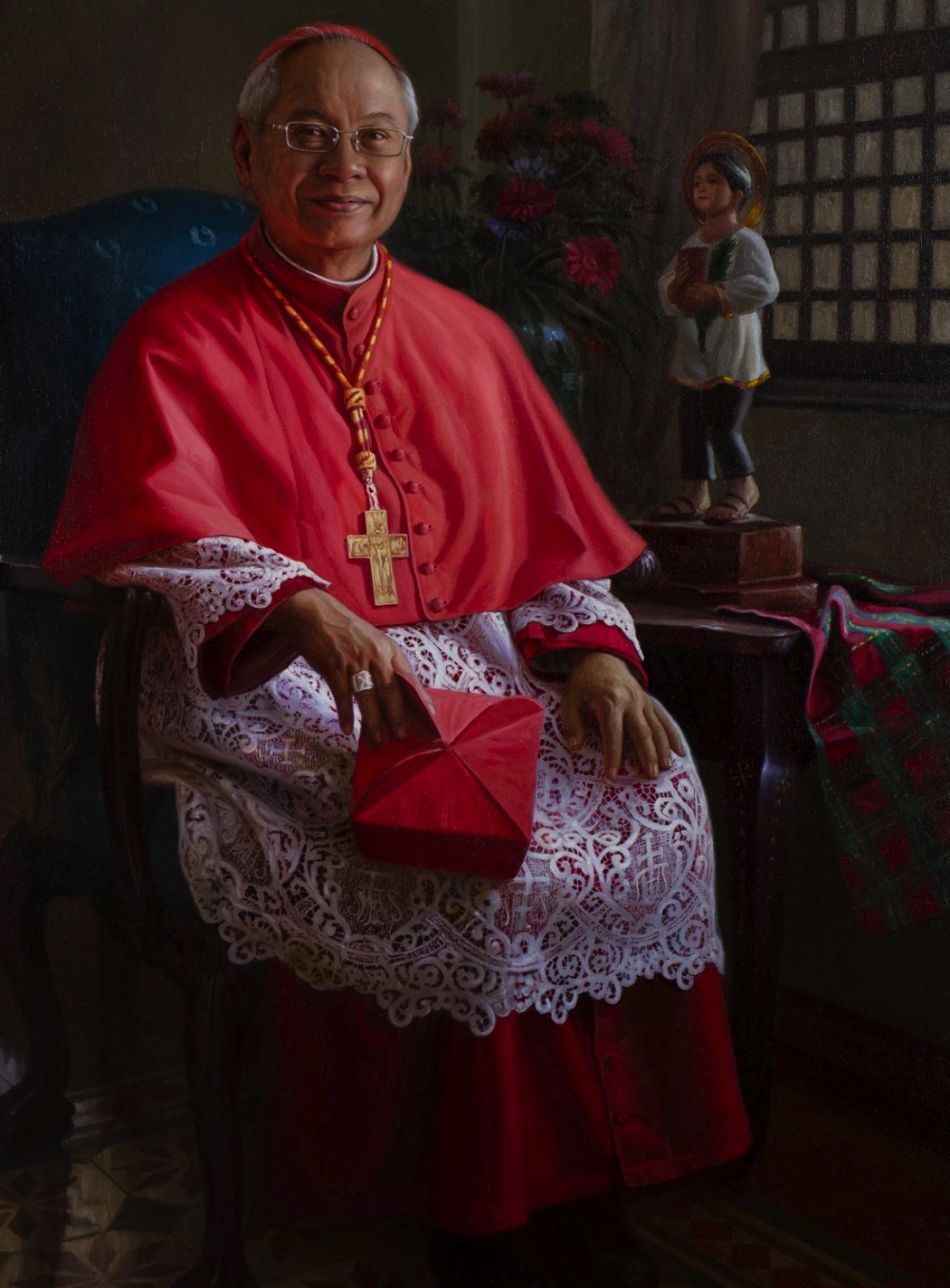
Cardinal Orlando Quevedo
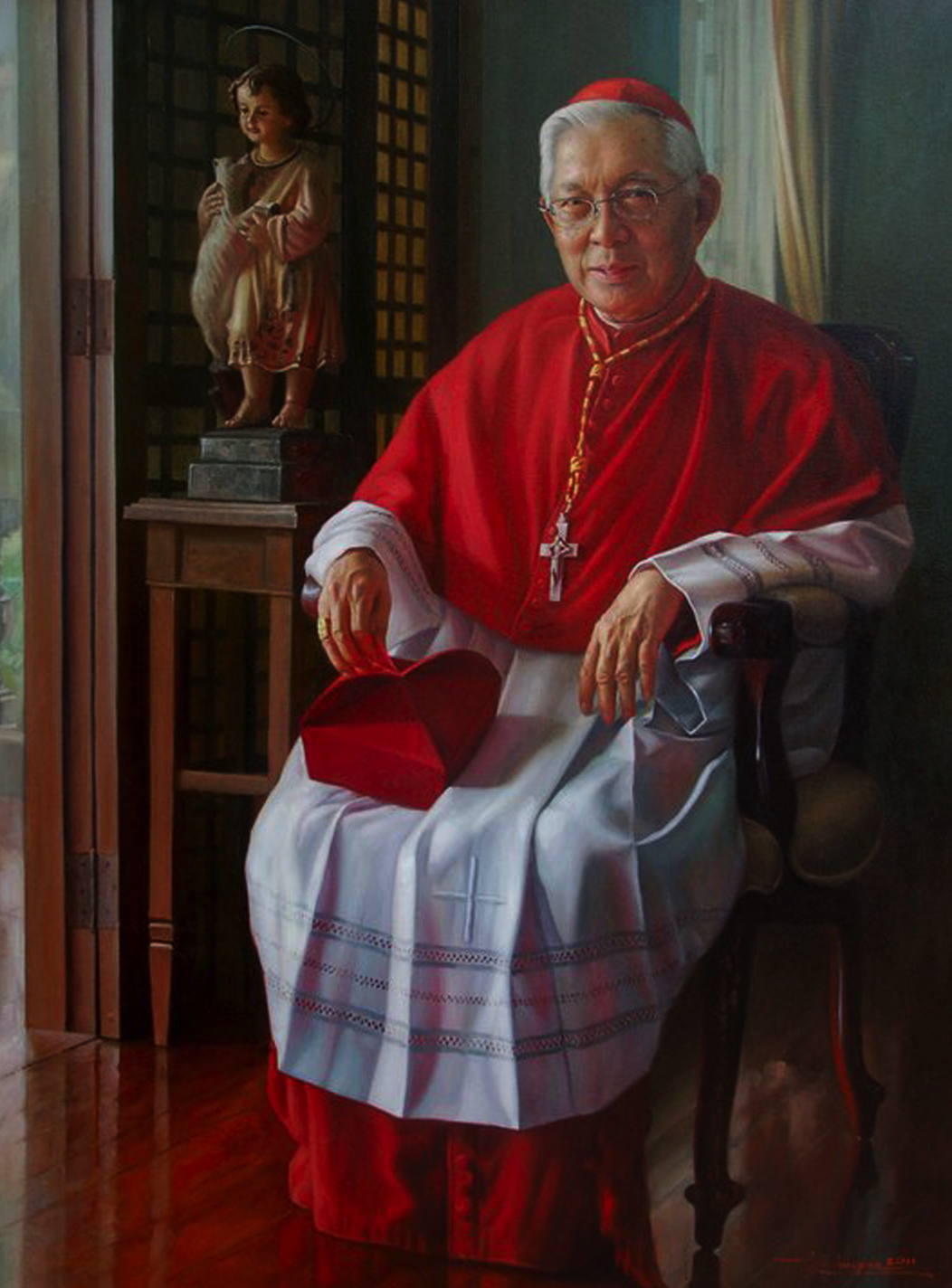
Cardinal Archbishop Emeritus of Manila Gaudencio Borbon Cardinal Rosales
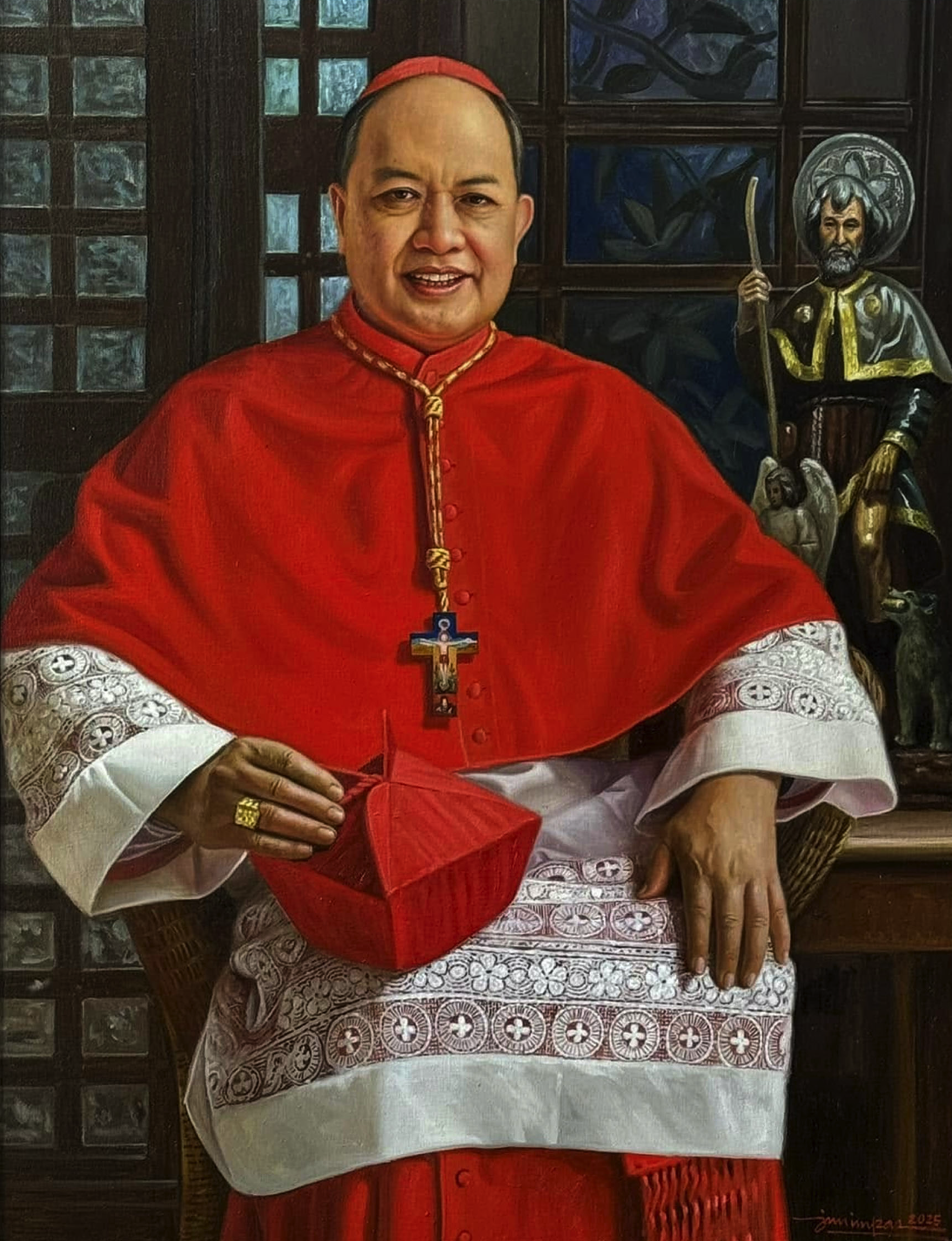
His Eminence Pablo Virgilio David, Cardinal Bishop of Caloocan
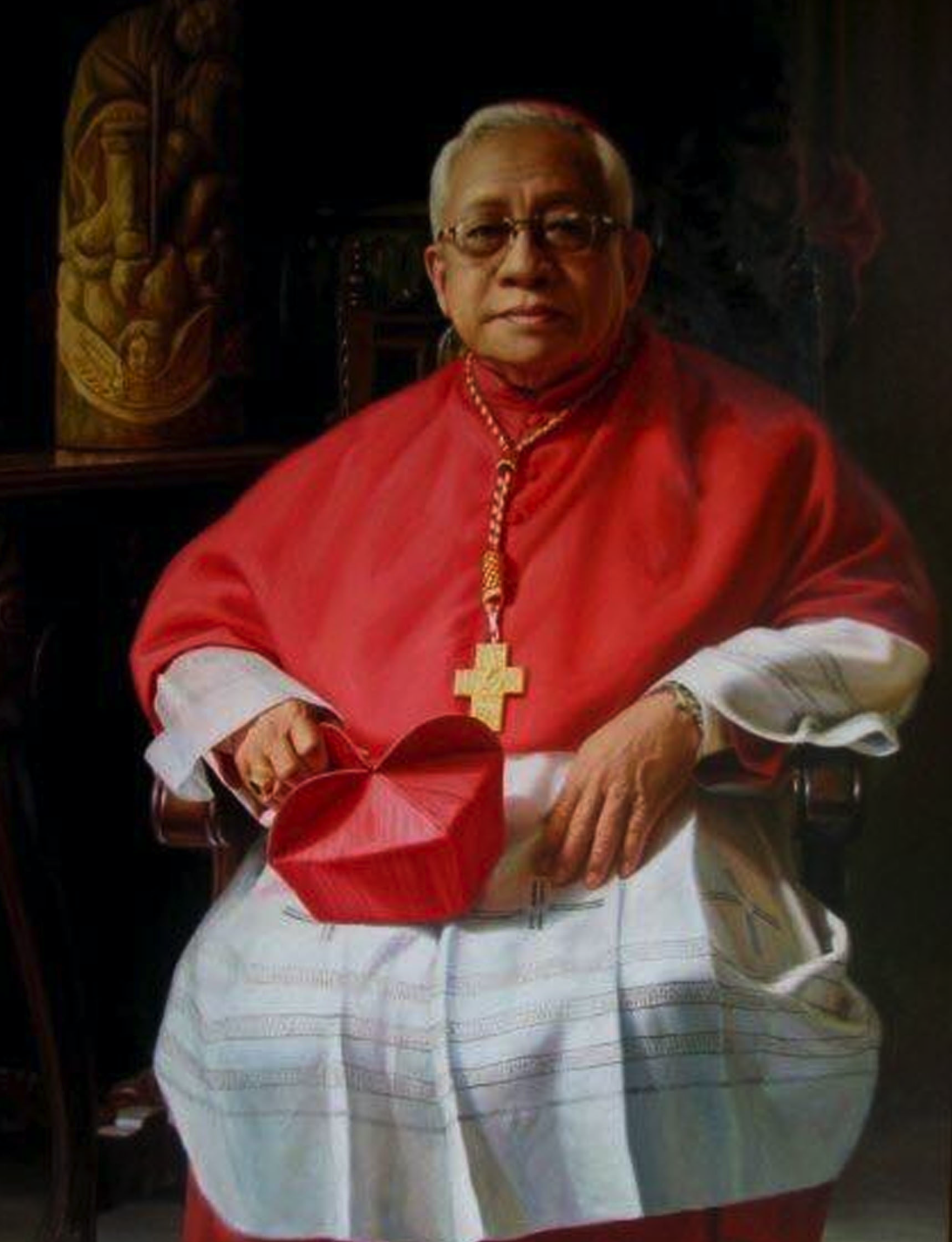
His Eminence Ricardo J. Vidal, Cardinal Archbishop of Cebu
Events
The First NUSTAR BALL
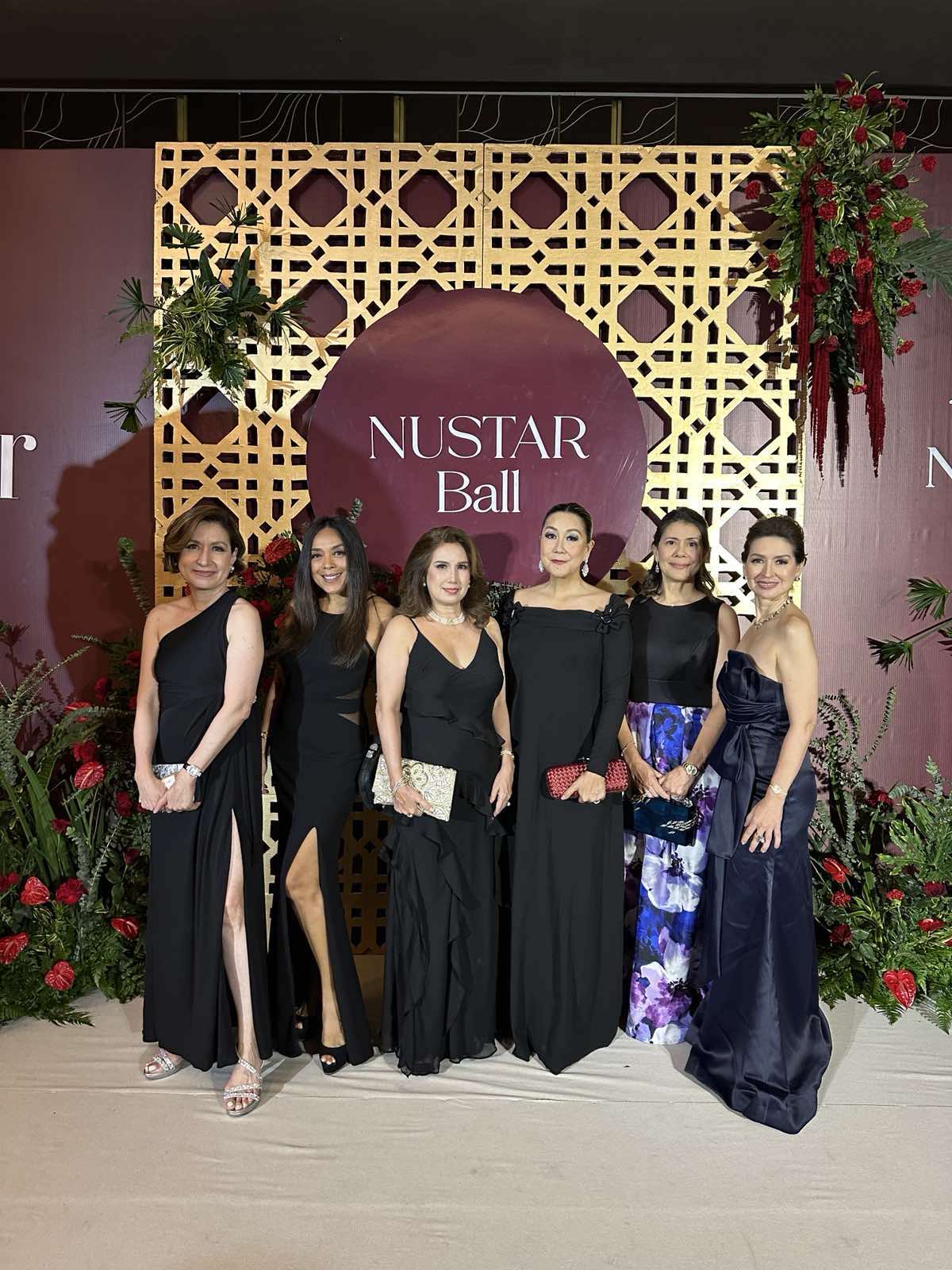
The NUSTAR Ballroom, a magnificent venue at the NUSTAR Resort and Casino in Cebu, sets the stage for last night’s first-ever NUSTAR Ball.

Black was the color of night at the Zee table.
Glamorous guests from Manila and Cebu converged at the NUSTAR Ballroom, an exquisite venue within the NUSTAR Resort and Casino in Cebu. The evening unfolded with a seated 5-course dinner. The opulent feast started with Beetroot Salmon Gravlax, adorned with caper berries, caviar, set with delicate edible flowers; and a main course of Compressed Pork Belly with Crackling Skin and Baby Scallops. Another highlight was the auction of coveted items like Dior and YSL handbags, a limited-edition Bulgari watch, and an exclusive 2-night stay in Nustar’s opulent 3-bedroom villa—complete with a private pool and a dedicated butler. The charity evening benefited the Cameleon Association, an NGO based in Iloilo City created in 1997 that developed a global approach to act on the causes and effects of sexual violence against children.

Nora Sol, Beth Go, Frances Siao and Marylou Ong

Ina Ronquillo, Maryanne Aboitiz and Jackie Lotzof

Designers Jun Escario and Philip Rodriguez

Philip Rodriguez with NUSTAR Malls two power ladies: May Adolfo and Joanna Salazar

Lana Osmeña with Mariquita Yeung

PJ Castillo and Kaye Abad with Cary Santiago

Drew Sarmiento with LV Manager Adrian Decuigan

Cary Santiago with Eva Gullas

Manila socialites Julie Boschi and Ching Cruz with June Alegrado
It was a night of elegance, luxury, and unforgettable memories as ladies in long gowns and gentlemen in black ties danced the night away.
-
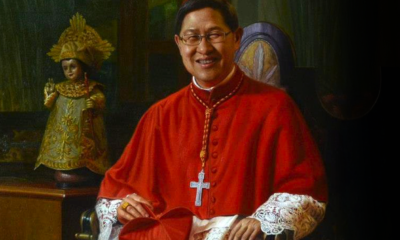
 People2 months ago
People2 months agoThe Cardinals–an Amazing Gallery of Portraits on Cardinals in the Philippines by Artist Jun Impas
-

 QuickFx4 weeks ago
QuickFx4 weeks agoHill Station Baguio-Mitos Benitez-Yñiguez Raises the Bar with a Gastronomic Experience in a Cultural Heritage Building
-

 Style1 month ago
Style1 month agoFilippo Summer/Spring 2025 Menswear Collection-Fashion Designer Phillip Rodriguez Stays on Top of the Game
-

 Prime Target3 months ago
Prime Target3 months agoCarlo Gabiana—The Illustrated Man Makes a Mark on Cebu’s Tattoo Scene
-

 Arts & Culture3 months ago
Arts & Culture3 months agoChaos and Clarity: Zen Aesthetic in Oj Hofer’s Art
-

 Beauty & Wellness3 months ago
Beauty & Wellness3 months agoThe Lowdown on IV Drips–Dr. Victoria Jordan Sarmiento Opens Krowne Premiere Medical Aesthetics to Promote Overall Well-being
-

 QuickFx2 months ago
QuickFx2 months agoArt Beat–Maris Holopainen returns to the Original Qube Gallery Crossroads with a Smash Hit in Unscattered Voices
-

 Prime Target3 months ago
Prime Target3 months agoJamie Gellor–A Multihyphenate at the Intersection of Business, Beauty, and Wellness


